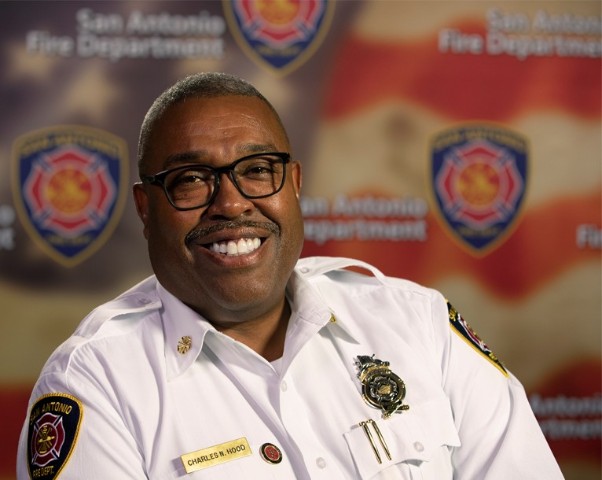“Communication is the tip of the spear in any emergency response.”
Posted on March 27, 2019

Communication is the tip of the spear in any type of emergency response. And for a city like ours, it’s absolutely critical.
We have a lot of large-scale events, whether it's the college basketball finals, fiestas, parades –where we have hundreds of thousands of people.
But while the size and scope of the incidents change, the one constant has always been the need for reliable communication. In the past, we carried additional radios and phones – and satellite phones – because we didn’t know what the communication challenges were going to be in a particular area. Then we would have to hand out radios to the different agencies so we could communicate with them.
It was a huge challenge.
A game changer
Having FirstNet is a game changer. This is a dedicated system that we can use throughout this country. And we can interact with other agencies and systems that may not be as sophisticated as the ones we're bringing in.
As a fire chief, there are certain things that keep me awake at night: a multiple shooter or mass casualty event like that or a coordinated complex attack on the city of San Antonio or this region.
What FirstNet has done for our Southwest Texas Fusion Center – which is in the same building as our police and fire departments – is that it has allowed us to have confidence in our partners' ability to communicate with us. It’s reassuring for us to have that strong communication capability. To have access to near real-time information and better situational awareness.
Mitigating risk
The biggest risk is always the safety of the personnel assigned to an incident. If something critical happens and you need help, you need additional resources at a moment's notice, you don't want to miss that call. You don't want to have to figure out some alternate way to communicate in an emergency.
Another thing that's really critical for first responders when you're deployed, is to be able to communicate with your family. I was in Hemphill, Texas, for 14 days after the Space Shuttle Columbia explosion in 2003. We were in the middle of a swamp. And I had four young boys and a wife at home. If you can't call home and get that comfort in knowing that they're okay, it makes it very difficult to work.
So, when FirstNet came in and started giving us information we were ecstatic. FirstNet takes care of some of response challenges we’ve had in years past that many of us with 30-plus years of service remember. We know how difficult it was to not be able to communicate with a multitude of agencies.
Staying connected
The year before the Final Four, I was able to go out and shadow the Phoenix Emergency Management Team. I was able to look at their communications and the number of partners or stakeholders that were part of providing for their Final Four.
We were able to take that knowledge and look at where we set up command, how we run our Fusion Center, how we stage our resources and the number of military and federal agencies that are going to come in and help us.
The other thing we had to consider is we were going to have 20,000 to 30,000 people coming out using their cellphones and potentially tying up the system.
For us to not have to worry about that as a challenge – it was something that was very comforting.
It would be disappointing to go into a major metropolitan city or to deploy our assets someplace else and not have that FirstNet capability. I know the next two cities hosting the Final Four shadowed here. They saw the interaction, they saw the capability. So, I'm sure for any large-scale event that FirstNet is going to be a part of it.
Charles Hood has been the Fire Chief for the San Antonio Fire Department – one of the largest in the country with about 1,800 personnel – for the last 12 years. He has 35 years of experience, including with the City of Phoenix Fire Department. Chief Hood holds a Bachelor of Science degree in Fire Service Management from the University of Ottawa and has attended the Harvard Kennedy School of Executive Education. He is on the adjunct faculty at Texas A&M University National Emergency Response and Rescue Training Center.
